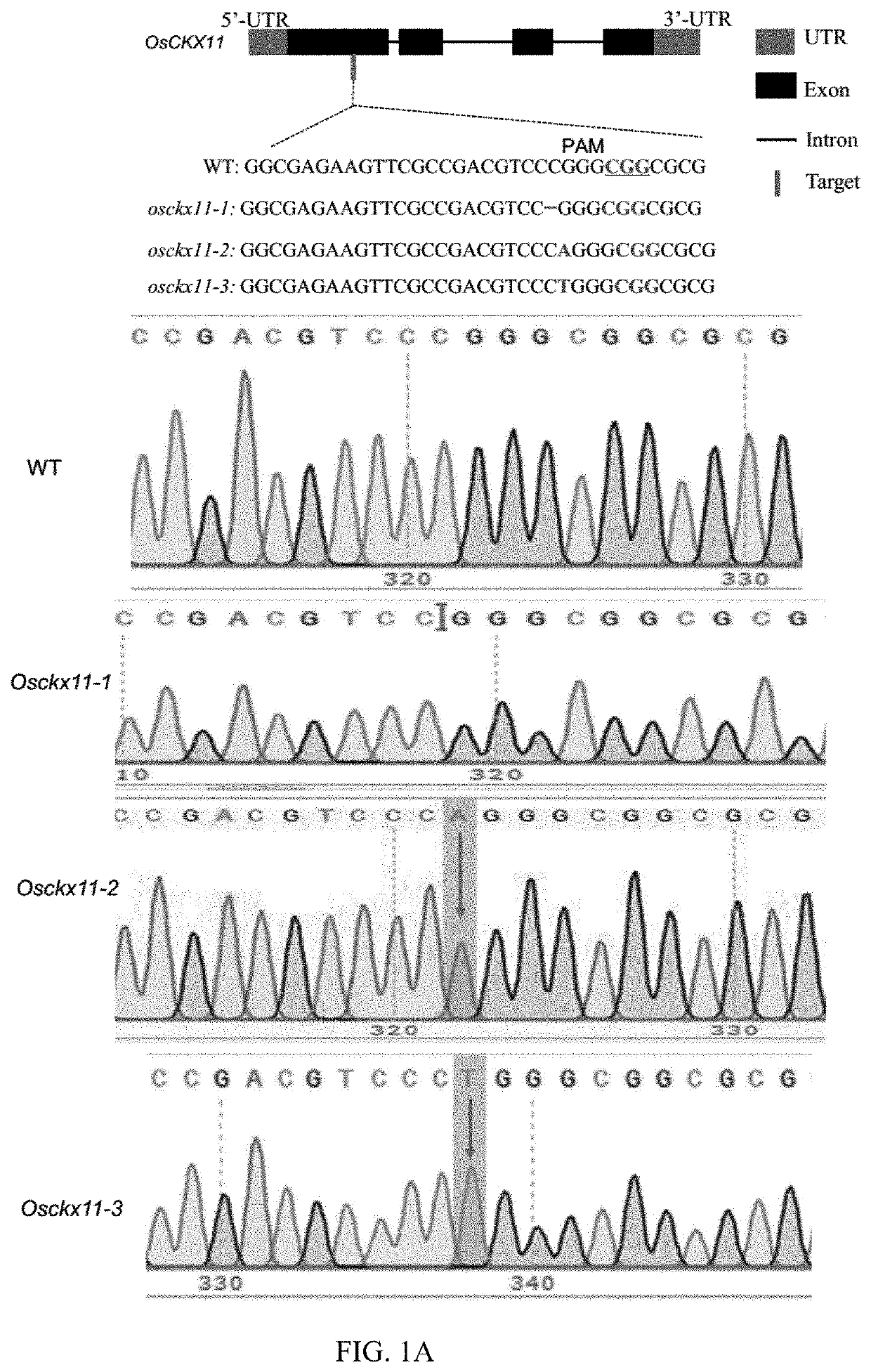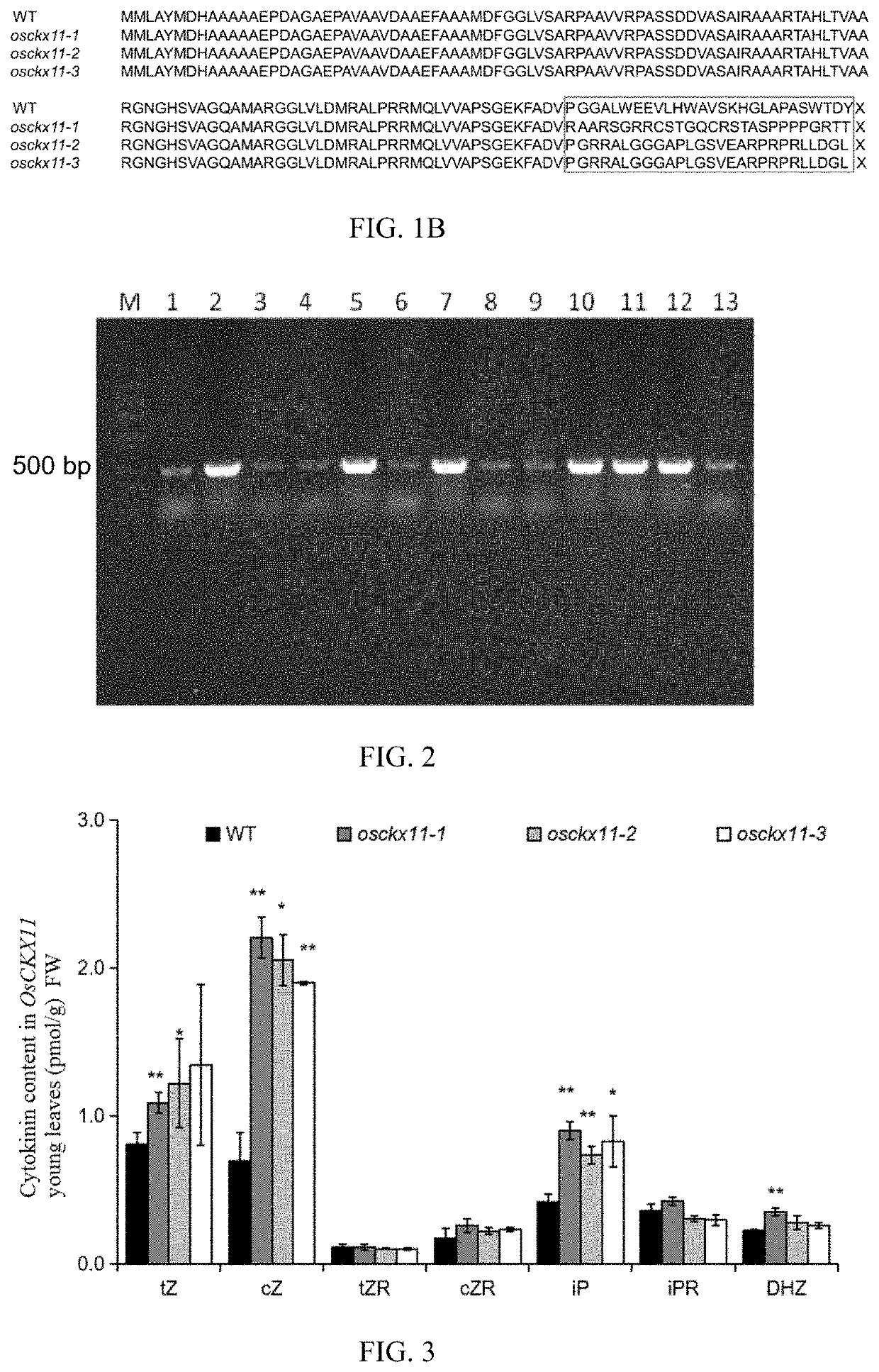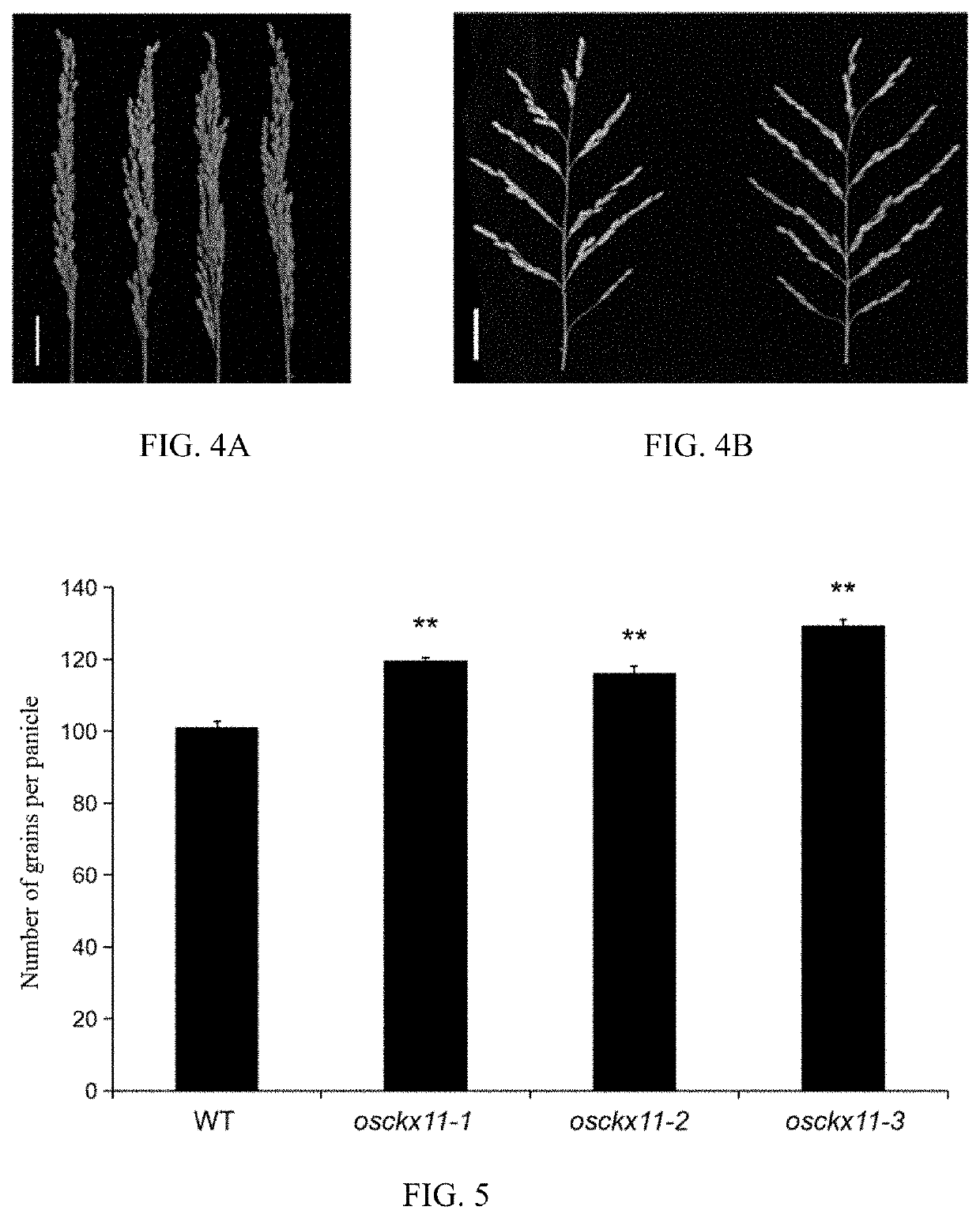A gene osckx11 for controlling rice grain number and use thereof
a technology of rice grain number and gene, applied in the field of plant genetic engineering, can solve the problems of affecting the normal growth and development of plants, changing the level of cytokinin in plants, and the food crisis facing mankind has become increasingly severe, so as to reduce the expression of osckx11 and increase rice grains. the effect of the
- Summary
- Abstract
- Description
- Claims
- Application Information
AI Technical Summary
Benefits of technology
Problems solved by technology
Method used
Image
Examples
example 1
[0071]Design of OsCKX11 Knockout Target and Vector Construction
[0072]The gene OsCKX11 has an accession number of LOC_Os08g35860, and its gene function has not been elucidated yet. The deoxynucleotide sequence of the gene was queried through the Rice Genome Browser (http: / / rice.plantbiology.msu.edu), and the deoxynucleotide sequence of the gene is shown as SEQ ID NO.: 1 in the sequence listing, partial deoxynucleotide sequence of the protein encoded by the gene is shown as sequence SEQ ID NO.: 2 in the sequence listing, and the amino acid sequence of the protein encoded by the gene is shown as SEQ ID NO.: 3 in the sequence listing. The nucleotide sequence of gene OsCKX11 has 2949 bp, including four exons and three introns, as shown in SEQ ID NO.: 1 in the sequence listing.
[0073]Design of Specific Knockout Target
[0074]Log in to the CRISPR-PLANT website (https: / / www.genome.arizona.edu / crispr / CRISPRsearch.html) and design a specific knockout primers based on the deoxynucleotide sequence...
example 2
[0093]Identification of Homozygous Mutants of Osckx11
[0094]Extraction of DNA from Transgenic Rice Seedlings
[0095]24 transgenic T1 seedlings were obtained in a transgenic cycle of about three months, and DNA was extracted from rice leaves after hardening the seedlings. The kit as used was a plant genomic DNA extraction kit (Shanghai Shenggong Bioengineering Co., Ltd., specific usage and dosage may be referred to the product instructions).
[0096]Amplification of Fragments Near the OsCKX11 Gene Target
[0097]The OsCKX11 DNA fragments near the target site were amplified by PCR technology. The primers for PCR amplification have following SEQ ID NO.: 10 and SEQ ID NO.: 11.
SEQ ID NO.: 10, forward primer for identification:5′-ATGGCTGTTTTGGAGGTCCG-3′SEQ ID NO.: 10, reverse primer for identification:5′-AGCAGACATGGCACTCGCCG-3′
[0098]The total volume of the PCR reaction was 50 μL, including 5 μL of template DNA, 25 μL of 2×KOD Buffer, 7 μL of dNTP, 2 μL of ddH2O, 5 μL of forward and reverse primers...
example 3
[0104]Quantification of Cytokinin Content in Osckx11 Homozygous Mutant
[0105]Extraction of Cytokinin
[0106]T1 generation osckx11 homozygous mutants were harvested and planted in the field. Field sampling was performed on the T2 generation mutants and wild-type flag leaves at the young leaf stage, including three independent mutant lines and 3 biological repeats for each independent line. The sample was ground in liquid nitrogen, about 100 mg of the ground sample was weighed and placed in a 2-mL centrifuge tube (Eppendorf), and the accurate mass was recorded. 1 mL of 80% methanol and a corresponding internal standard ([2H5]tZ, [2H5]tZR, [15N4]cZ, [15N4]cZR, [2H6]iP, [2H6]iPR, 45 pg each) were added rapidly. The resulting mixture was vortexed for 2 h at 4° C. Centrifugation was conducted at 4° C. for 10 min at 13000 g. The supernatant was pipetted and transferred to a new 2-mL centrifuge tube, and blown to dry with nitrogen. To the remaining precipitate was again added 1 mL of 80% metha...
PUM
| Property | Measurement | Unit |
|---|---|---|
| temperature | aaaaa | aaaaa |
| total volume | aaaaa | aaaaa |
| total volume | aaaaa | aaaaa |
Abstract
Description
Claims
Application Information
 Login to View More
Login to View More - R&D
- Intellectual Property
- Life Sciences
- Materials
- Tech Scout
- Unparalleled Data Quality
- Higher Quality Content
- 60% Fewer Hallucinations
Browse by: Latest US Patents, China's latest patents, Technical Efficacy Thesaurus, Application Domain, Technology Topic, Popular Technical Reports.
© 2025 PatSnap. All rights reserved.Legal|Privacy policy|Modern Slavery Act Transparency Statement|Sitemap|About US| Contact US: help@patsnap.com



